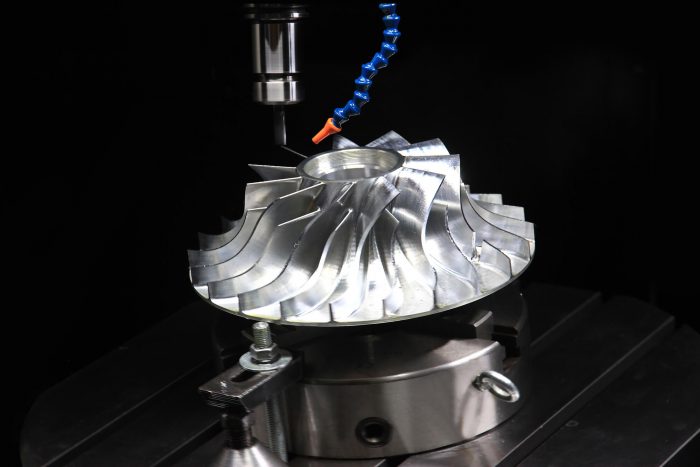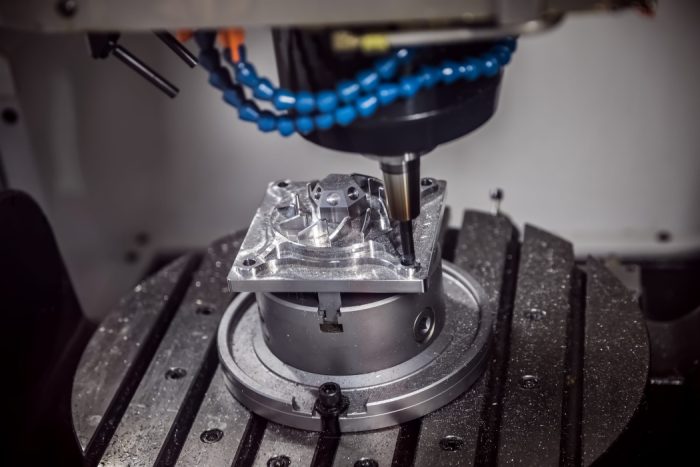CNC machining, based on computer programming, allows machines to shape parts while reducing the overall production cost of a business. As the world demands highly precise parts and components, CNC machining is gaining popularity with modern trends shaping the way the industry operates. Although the technology has existed for decades, advanced computing is unleashing the full potential of CNC machinery to help a growing number of industries. While most people understand the basic principles, this fascinating process deserves deeper exploration. So, what is CNC machining, and how can it help?
A CNC machining overview
CNC stands for Computerised Numerical Control, which covers a computerised manufacturing process where pre-programmed software and computer codes control the movement of tools. CNC machining describes the entire process, from design and programming to the finished component.
The CNC machine carries out the work, following instructions laid out in computer programs to perform a sequence of machining processes autonomously. To do this, CNC machines can utilise a range of tools, including grinders, lathes, and turning mills, allowing them to cut and shape the material. These computer-controlled tools often operate along multiple axes, removing material from a blank to create different parts and prototypes.
How does CNC machining work?

CNC machining follows a stage-by-stage process. This process helps to translate a product from concept through to a finished part.
Computer-Aided Design (CAD) and Computer-Aided Engineering (CAE)
Firstly, a designer creates a detailed model of the part as a 2D vector or 3D solid part design using Computer-Aided Design (CAD) software. This file defines all mechanical dimensions, geometries, and other relevant details. At this stage, it is possible to use Computer-Aided Engineering software to test the design and look at its physical properties under stress.
Translating with Computer-Aided Machining (CAM)
The next stage involves translating the design into a language the CNC machine understands. Usually, Computer-Aided Machining (CAM) software converts the designs, taking the designs and geometries and converting them into a coded set of manufacturing instructions. Many software suites now include CAD, CAE, and CAM to make the process significantly easier.
CNC Code
For CNC machining, CAM produces specialised computer languages called ‘G code’ and ‘M code,’ which convert the precise measurements into a set of instructions for the CNC machine. They tell the machine which tools to use, the coordinates, the direction of movement, and any other information needed to machine the part.
CNC Machining
Once the machine is programmed, an operator prepares it to receive the blank, making sure that it has the right tools fitted. They insert the blank, fit it in place, and the machine follows processes such as cutting, milling and lathing to create the final piece. Sometimes, the machinist may need to stop the operation and rotate the part.
Although many CNC machining software packages require little specialist knowledge, complex parts or large production runs need a higher level of expertise. Accordingly, most CNC specialists employ designers and programmers with deep knowledge of mechanical design, technical drawing, mathematics, and computer programming.
What are the main machine processes?
CNC machines are available in a number of types. Some, such as water jets, use a single process, while others use numerous tools to remove material. The main processes include:
- Milling
- Grinding
- Drilling
- Routing
- Water Jet
- Laser Cutting
What materials are used in CNC machining?
CNC machining is versatile and suits a number of different materials. Aluminium is a favoured metal due to its versatility, but CNC machines can handle other metals, including steel, stainless steel, brass, bronze, cast iron and even titanium. Other popular materials include plastic, wood, glass, foam, and composite material.
What industries use CNC machining?
CNC machining is an invaluable process for many industries attracted by its high precision and ability to produce parts cost-effectively.
Aerospace
As components used for aerospace often face ultra-high speeds, alongside high temperature and extreme air pressure, they need manufacturing with exceptional precision. Even a minor flaw can see a catastrophic failure. CNC is a premier process for manufacturing aeroplane parts because the CAD element supports engineering tests, while machining allows very fine tolerances.
Medical
The medical industry often uses CNC processes for rapid prototyping and custom parts such as implants, which require accurate dimensions. Other uses include medical instruments, research equipment, and titanium medical screws fixed into bones.
Transportation
The transport industry benefits from the ability to engineer and test prototypes quickly and manufacture custom parts. Like the aerospace industry, components such as engine blocks, pistons, and gears face high stresses and need high precision, making CNC particularly useful for high-performance vehicles.
Oil and Gas
The petrochemicals industry needs high precision for parts such as valves, where leaks can be a serious risk to safety. The industry also needs high durability for drilling rigs operating in very harsh conditions where even a small component failing can cost a lot of money. For these reasons, CNC machining is a common technique within this sector.
Other industries
Other industries that use CNC technology include telecommunications, construction, agricultural tools, electronics, and infrastructure. They all make use of CAD to perfect the design before full production.
What are the Benefits of CNC Machining?
CNC machining has become integral to product design and manufacturing because it provides many benefits.

Quick and cost-effective
CNC machining is quick, making it especially useful for rapid prototyping and testing parts without the need for expensive dies, moulds, or custom-made jigs. Skilled designers can create CAD models in a few days, and the machining process itself is quick. The high speed also makes it cost-effective for large production runs, and CNC machining uses less manual labour than fabrication and other processes.
High precision and accuracy
Another attraction of CNC machining is precision and accuracy, which produces parts within extremely high tolerances. Importantly, for larger production runs, CNC is consistent and produces parts that are exactly the same. The process also creates parts with fewer defects that can lead to weaknesses or component failure.
Easily scalable and reduced material stress
CNC machining can produce small or large parts, and businesses can scale up production quickly while storing designs and CNC instructions for future use. It’s also possible to scale down easily when needed. CNC uses a subtractive process, which places less stress on the material and does not physically alter it, unlike injection moulding or traditional fabrication.
Fewer operator mistakes
Since it is highly automated, CNC sees fewer mistakes from human error. As human intervention only includes preparing the machine and rotating the blank, the likelihood of injuries is much less than in other fabrication techniques. Some CNC machines now change tools automatically, further reducing the possibility of operator mistakes and injuries.
What are the limitations?
While CNC machining brings many benefits, it also has some limitations. For example, very large parts can cause problems with positioning, heat stress, and distortion. In addition, while CNC machining does not need specialist skills such as welding, it still requires specialised training for programmers and machine operators.
Another issue is that CNC machines are expensive and need a strict maintenance regime to keep them operating perfectly. Particularly complex parts require multi-axis machines, which are more expensive to buy and operate.
With respect to material, the process cannot always cope with difficult-to-reach cuts, such as undercuts and complex internal geometry. For softer materials, CNC machining cannot always maintain tight tolerances because of flexing and distortion. Tall features, thin walls, and non-standard hole sizes can cause similar problems.
How Elite CNC can help
Now that you have a fuller understanding of the CNC machining process, how can Elite CNC help your business? We use only the latest technologies, with powerful computers and advanced tools to make complex parts with high precision.
Our highly skilled and qualified staff can help you through every stage of the process, from design to manufacture. They can help you draft designs and translate them into CNC machining instructions to convert your concept into a tangible object. Whether you want custom parts, prototypes, or large production runs, we offer competitive pricing and always deliver on time.
If you want to talk to our experts and discuss your concept, contact the premier company for CNC machining in Sydney. Elite CNC know our business and can help you succeed.
Learn more about how CNC compares to 3D printing and CNC vs fabrication to determine what is right for you.







